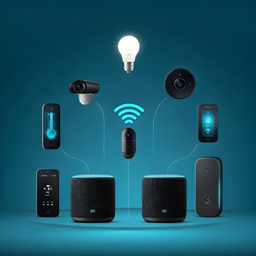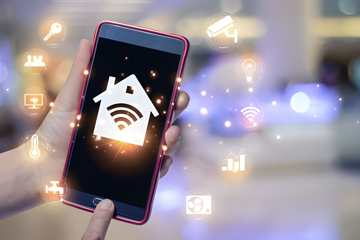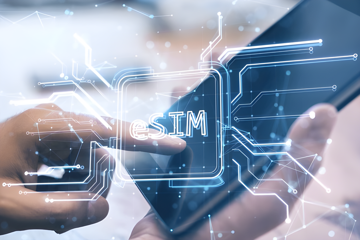Mastering ESP32 Connectivity: Wi-Fi, Bluetooth, and BLE
ESP32 BLE Client Setup: A Comprehensive IoT Tutorial
The ESP32 is a versatile microcontroller that supports Bluetooth Low Energy Native Protocols: Wi-Fi (2.4 GHz), Bluetooth Classic, and BLEExplore ESP32 connectivity with Wi-Fi, Bluetooth Classic, and BLE. Learn implementation tips and best practices for IoT projects. (BLE), making it an excellent choice for IoT applications requiring low-power wireless communication. This guide provides a comprehensive overview of setting up the ESP32 as a BLE client, enabling it to scan, connect, and interact with BLE peripherals such as heart rate monitors, environmental sensors, or other IoT devices.
Native Protocols: Wi-Fi (2.4 GHz), Bluetooth Classic, and BLEExplore ESP32 connectivity with Wi-Fi, Bluetooth Classic, and BLE. Learn implementation tips and best practices for IoT projects. (BLE), making it an excellent choice for IoT applications requiring low-power wireless communication. This guide provides a comprehensive overview of setting up the ESP32 as a BLE client, enabling it to scan, connect, and interact with BLE peripherals such as heart rate monitors, environmental sensors, or other IoT devices.
Table of Contents🔗
- Introduction to BLE
 Native Protocols: Wi-Fi (2.4 GHz), Bluetooth Classic, and BLEExplore ESP32 connectivity with Wi-Fi, Bluetooth Classic, and BLE. Learn implementation tips and best practices for IoT projects. Client Communication
Native Protocols: Wi-Fi (2.4 GHz), Bluetooth Classic, and BLEExplore ESP32 connectivity with Wi-Fi, Bluetooth Classic, and BLE. Learn implementation tips and best practices for IoT projects. Client Communication - BLE Client Workflow on ESP32
 Setting Up ESP32 as a Wi-Fi Access PointMaster ESP32 AP configuration with our step-by-step guide. Set up a secure, local IoT network using practical code examples and optimization tips.
Setting Up ESP32 as a Wi-Fi Access PointMaster ESP32 AP configuration with our step-by-step guide. Set up a secure, local IoT network using practical code examples and optimization tips. - Prerequisites
- Setting Up the BLE
 Native Protocols: Wi-Fi (2.4 GHz), Bluetooth Classic, and BLEExplore ESP32 connectivity with Wi-Fi, Bluetooth Classic, and BLE. Learn implementation tips and best practices for IoT projects. Client
Native Protocols: Wi-Fi (2.4 GHz), Bluetooth Classic, and BLEExplore ESP32 connectivity with Wi-Fi, Bluetooth Classic, and BLE. Learn implementation tips and best practices for IoT projects. Client - Scanning for BLE
 Native Protocols: Wi-Fi (2.4 GHz), Bluetooth Classic, and BLEExplore ESP32 connectivity with Wi-Fi, Bluetooth Classic, and BLE. Learn implementation tips and best practices for IoT projects. Devices
Native Protocols: Wi-Fi (2.4 GHz), Bluetooth Classic, and BLEExplore ESP32 connectivity with Wi-Fi, Bluetooth Classic, and BLE. Learn implementation tips and best practices for IoT projects. Devices - Connecting to a BLE
 Native Protocols: Wi-Fi (2.4 GHz), Bluetooth Classic, and BLEExplore ESP32 connectivity with Wi-Fi, Bluetooth Classic, and BLE. Learn implementation tips and best practices for IoT projects. Peripheral
Native Protocols: Wi-Fi (2.4 GHz), Bluetooth Classic, and BLEExplore ESP32 connectivity with Wi-Fi, Bluetooth Classic, and BLE. Learn implementation tips and best practices for IoT projects. Peripheral - Discovering Services and Characteristics
- Reading and Writing Characteristics
- Handling Notifications and Indications
- Practical Example: Interfacing with a Heart Rate Monitor
- Troubleshooting Common Issues
 Zigbee Over-the-Air (OTA) Firmware Updates with ESP32 CoordinatorsSecure your IoT network with OTA firmware upgrades using an ESP32 coordinator. Our guide details firmware setup, packaging, security, and troubleshooting.
Zigbee Over-the-Air (OTA) Firmware Updates with ESP32 CoordinatorsSecure your IoT network with OTA firmware upgrades using an ESP32 coordinator. Our guide details firmware setup, packaging, security, and troubleshooting.
Introduction to BLE Client Communication🔗
BLE client communication involves the ESP32 acting as a central device that discovers and interacts with BLE peripherals (servers). The client scans for nearby devices, connects to them, and reads or writes data to their GATT (Generic Attribute Profile Native Protocols: Wi-Fi (2.4 GHz), Bluetooth Classic, and BLEExplore ESP32 connectivity with Wi-Fi, Bluetooth Classic, and BLE. Learn implementation tips and best practices for IoT projects.) characteristics. This setup is ideal for applications like health monitoring, home automation, and industrial sensor networks.
Native Protocols: Wi-Fi (2.4 GHz), Bluetooth Classic, and BLEExplore ESP32 connectivity with Wi-Fi, Bluetooth Classic, and BLE. Learn implementation tips and best practices for IoT projects.) characteristics. This setup is ideal for applications like health monitoring, home automation, and industrial sensor networks.
BLE Client Workflow on ESP32🔗
The typical workflow for a BLE client on the ESP32 Setting Up ESP32 as a Wi-Fi Access PointMaster ESP32 AP configuration with our step-by-step guide. Set up a secure, local IoT network using practical code examples and optimization tips. involves the following steps:
Setting Up ESP32 as a Wi-Fi Access PointMaster ESP32 AP configuration with our step-by-step guide. Set up a secure, local IoT network using practical code examples and optimization tips. involves the following steps:
1. Initialize the BLE Native Protocols: Wi-Fi (2.4 GHz), Bluetooth Classic, and BLEExplore ESP32 connectivity with Wi-Fi, Bluetooth Classic, and BLE. Learn implementation tips and best practices for IoT projects. stack and set up the client.
Native Protocols: Wi-Fi (2.4 GHz), Bluetooth Classic, and BLEExplore ESP32 connectivity with Wi-Fi, Bluetooth Classic, and BLE. Learn implementation tips and best practices for IoT projects. stack and set up the client.
2. Scan for nearby BLE Native Protocols: Wi-Fi (2.4 GHz), Bluetooth Classic, and BLEExplore ESP32 connectivity with Wi-Fi, Bluetooth Classic, and BLE. Learn implementation tips and best practices for IoT projects. devices and filter them based on their advertised services or names.
Native Protocols: Wi-Fi (2.4 GHz), Bluetooth Classic, and BLEExplore ESP32 connectivity with Wi-Fi, Bluetooth Classic, and BLE. Learn implementation tips and best practices for IoT projects. devices and filter them based on their advertised services or names.
3. Connect to the desired peripheral and discover its GATT Native Protocols: Wi-Fi (2.4 GHz), Bluetooth Classic, and BLEExplore ESP32 connectivity with Wi-Fi, Bluetooth Classic, and BLE. Learn implementation tips and best practices for IoT projects. services and characteristics.
Native Protocols: Wi-Fi (2.4 GHz), Bluetooth Classic, and BLEExplore ESP32 connectivity with Wi-Fi, Bluetooth Classic, and BLE. Learn implementation tips and best practices for IoT projects. services and characteristics.
4. Read or write data to the peripheral’s characteristics.
5. Handle notifications or indications for real-time data updates.
6. Disconnect when the interaction is complete.
Prerequisites🔗
1. Hardware: ESP32 board Setting Up ESP32 as a Wi-Fi Access PointMaster ESP32 AP configuration with our step-by-step guide. Set up a secure, local IoT network using practical code examples and optimization tips., BLE peripheral (e.g., pulse sensor).
Setting Up ESP32 as a Wi-Fi Access PointMaster ESP32 AP configuration with our step-by-step guide. Set up a secure, local IoT network using practical code examples and optimization tips., BLE peripheral (e.g., pulse sensor).
2. Libraries: Arduino IDE with ESP32 or  Setting Up ESP32 as a Wi-Fi Access PointMaster ESP32 AP configuration with our step-by-step guide. Set up a secure, local IoT network using practical code examples and optimization tips. BLE Arduino
Setting Up ESP32 as a Wi-Fi Access PointMaster ESP32 AP configuration with our step-by-step guide. Set up a secure, local IoT network using practical code examples and optimization tips. BLE ArduinoNimBLE library installed.
3. Basic Knowledge: Familiarity with GATT Native Protocols: Wi-Fi (2.4 GHz), Bluetooth Classic, and BLEExplore ESP32 connectivity with Wi-Fi, Bluetooth Classic, and BLE. Learn implementation tips and best practices for IoT projects. structure (Services, Characteristics, UUIDs).
Native Protocols: Wi-Fi (2.4 GHz), Bluetooth Classic, and BLEExplore ESP32 connectivity with Wi-Fi, Bluetooth Classic, and BLE. Learn implementation tips and best practices for IoT projects. structure (Services, Characteristics, UUIDs).
Setting Up the BLE Client🔗
To begin, ensure you have the ESP32 Arduino core Zigbee Over-the-Air (OTA) Firmware Updates with ESP32 CoordinatorsSecure your IoT network with OTA firmware upgrades using an ESP32 coordinator. Our guide details firmware setup, packaging, security, and troubleshooting. installed. The
Zigbee Over-the-Air (OTA) Firmware Updates with ESP32 CoordinatorsSecure your IoT network with OTA firmware upgrades using an ESP32 coordinator. Our guide details firmware setup, packaging, security, and troubleshooting. installed. The ESP32 or  Setting Up ESP32 as a Wi-Fi Access PointMaster ESP32 AP configuration with our step-by-step guide. Set up a secure, local IoT network using practical code examples and optimization tips. BLE Arduino
Setting Up ESP32 as a Wi-Fi Access PointMaster ESP32 AP configuration with our step-by-step guide. Set up a secure, local IoT network using practical code examples and optimization tips. BLE ArduinoNimBLE library is recommended for BLE Native Protocols: Wi-Fi (2.4 GHz), Bluetooth Classic, and BLEExplore ESP32 connectivity with Wi-Fi, Bluetooth Classic, and BLE. Learn implementation tips and best practices for IoT projects. communication due to its efficiency and ease of use.
Native Protocols: Wi-Fi (2.4 GHz), Bluetooth Classic, and BLEExplore ESP32 connectivity with Wi-Fi, Bluetooth Classic, and BLE. Learn implementation tips and best practices for IoT projects. communication due to its efficiency and ease of use.
#include <BLEDevice.h>
#include <BLEUtils.h>
#include <BLEScan.h>
void setup() {
Serial.begin(115200);
BLEDevice::init("ESP32_BLE_Client");
}
This code initializes the BLE stack and sets up the ESP32 Setting Up ESP32 as a Wi-Fi Access PointMaster ESP32 AP configuration with our step-by-step guide. Set up a secure, local IoT network using practical code examples and optimization tips. as a BLE client.
Setting Up ESP32 as a Wi-Fi Access PointMaster ESP32 AP configuration with our step-by-step guide. Set up a secure, local IoT network using practical code examples and optimization tips. as a BLE client.
Scanning for BLE Devices🔗
The next step is to scan for nearby BLE Native Protocols: Wi-Fi (2.4 GHz), Bluetooth Classic, and BLEExplore ESP32 connectivity with Wi-Fi, Bluetooth Classic, and BLE. Learn implementation tips and best practices for IoT projects. devices. Use the
Native Protocols: Wi-Fi (2.4 GHz), Bluetooth Classic, and BLEExplore ESP32 connectivity with Wi-Fi, Bluetooth Classic, and BLE. Learn implementation tips and best practices for IoT projects. devices. Use the BLEScan class to start scanning and filter devices based on their advertised data.
void scanForDevices() {
BLEScan* pScan = BLEDevice::getScan();
pScan->setActiveScan(true); // Enable active scanning for faster discovery
pScan->start(5, false); // Scan for 5 seconds
BLEScanResults foundDevices = pScan->getResults();
for (int i = 0; i < foundDevices.getCount(); i++) {
BLEAdvertisedDevice device = foundDevices.getDevice(i);
Serial.printf("Found Device: %s\n", device.toString().c_str());
}
}
Connecting to a BLE Peripheral🔗
Once you’ve identified the target device, connect to it using its address.
BLEClient* pClient = BLEDevice::createClient();
if (pClient->connect(device.getAddress())) {
Serial.println("Connected to BLE device");
}
- Tip: Use
BLEDevice::getAddress()to reconnect to known devices.
Discovering Services and Characteristics🔗
After connecting, query the server’s GATT Native Protocols: Wi-Fi (2.4 GHz), Bluetooth Classic, and BLEExplore ESP32 connectivity with Wi-Fi, Bluetooth Classic, and BLE. Learn implementation tips and best practices for IoT projects. table to find available services:
Native Protocols: Wi-Fi (2.4 GHz), Bluetooth Classic, and BLEExplore ESP32 connectivity with Wi-Fi, Bluetooth Classic, and BLE. Learn implementation tips and best practices for IoT projects. table to find available services:
BLERemoteService* pRemoteService = pClient->getService(SERVICE_UUID);
if (pRemoteService != nullptr) {
BLERemoteCharacteristic* pChar = pRemoteService->getCharacteristic(CHAR_UUID);
}
| Service Name | UUID |
|---|---|
| Heart Rate | 0x180D |
| Environmental Sensing | 0x181A |
Reading and Writing Characteristics🔗
// Read
std::string value = pChar->readValue();
Serial.printf("Value: %s\n", value.c_str());
// Write
pChar->writeValue("ON", 2);
Handling Notifications and Indications🔗
Subscribe to characteristic updates for real-time data:
pChar->registerForNotify([](BLERemoteCharacteristic* pChar, uint8_t* data, size_t length, bool isNotify) {
Serial.printf("New value: %.*s\n", length, data);
});
// Enable notifications on the server
pChar->getDescriptor(BLEUUID((uint16_t)0x2902))->writeValue((uint8_t*)notificationOn, 2, true);
Practical Example: Interfacing with a Heart Rate Monitor🔗
- Objective: Read heart rate data from a BLE
 Native Protocols: Wi-Fi (2.4 GHz), Bluetooth Classic, and BLEExplore ESP32 connectivity with Wi-Fi, Bluetooth Classic, and BLE. Learn implementation tips and best practices for IoT projects. sensor.
Native Protocols: Wi-Fi (2.4 GHz), Bluetooth Classic, and BLEExplore ESP32 connectivity with Wi-Fi, Bluetooth Classic, and BLE. Learn implementation tips and best practices for IoT projects. sensor.
1. Scan for Devices: Filter by heart rate service UUID (0x180D).
2. Connect: Use the sensor’s MAC address.
3. Subscribe: Enable notifications for the Heart Rate Measurement characteristic (0x2A37).
// Simplified callback
void notifyCallback(BLERemoteCharacteristic* pChar, uint8_t* data, size_t length, bool isNotify) {
uint8_t heartRate = data[1];
Serial.printf("Heart Rate: %d BPM\n", heartRate);
}
Troubleshooting Common Issues🔗
- Device Not Found: Ensure the peripheral is advertising.
- Connection Drops: Check RSSI strength; adjust
BLEClient::setConnectTimeout(). - UUID Mismatch: Verify UUIDs using a BLE
 Native Protocols: Wi-Fi (2.4 GHz), Bluetooth Classic, and BLEExplore ESP32 connectivity with Wi-Fi, Bluetooth Classic, and BLE. Learn implementation tips and best practices for IoT projects. scanner app (e.g., nRF Connect).
Native Protocols: Wi-Fi (2.4 GHz), Bluetooth Classic, and BLEExplore ESP32 connectivity with Wi-Fi, Bluetooth Classic, and BLE. Learn implementation tips and best practices for IoT projects. scanner app (e.g., nRF Connect). - Optimization Tip: Use
pClient->disconnect()and deep sleep LTE Power Saving: Combining PSM and DRX with ESP32 Sleep ModesDiscover how combining LTE power-saving modes with ESP32 sleep techniques can extend battery life in IoT devices while ensuring reliable connectivity. between reads for battery-powered clients.
LTE Power Saving: Combining PSM and DRX with ESP32 Sleep ModesDiscover how combining LTE power-saving modes with ESP32 sleep techniques can extend battery life in IoT devices while ensuring reliable connectivity. between reads for battery-powered clients.
By following this guide, you can effectively set up and use the ESP32 as a BLE client, enabling seamless communication with a wide range of IoT devices Connecting ESP32 to Cloud Services via Wi-FiDiscover how to connect your ESP32 to AWS, Azure, and Google Cloud using secure Wi-Fi. This guide covers setup, error handling, and low power strategies.. Whether you’re building a health monitoring system or a smart home solution, the ESP32’s BLE capabilities provide a robust foundation for your projects.
Connecting ESP32 to Cloud Services via Wi-FiDiscover how to connect your ESP32 to AWS, Azure, and Google Cloud using secure Wi-Fi. This guide covers setup, error handling, and low power strategies.. Whether you’re building a health monitoring system or a smart home solution, the ESP32’s BLE capabilities provide a robust foundation for your projects.
Happy coding!
Author: Marcelo V. Souza - Engenheiro de Sistemas e Entusiasta em IoT e Desenvolvimento de Software, com foco em inovação tecnológica.
References🔗
- Arduino IDE Official Website: arduino.cc
- ESP-IDF Programming Guide: docs.espressif.com/projects/esp-idf
- ESP32 Arduino Core Documentation: docs.espressif.com/projects/arduino-esp32
- ESP32 Arduino Core Repository: github.com/espressif/arduino-esp32
- Espressif Documentation: docs.espressif.com

 8 months ago
8 months ago
 8 months ago
8 months ago
 8 months ago
8 months ago
 9 months ago
9 months ago
 9 months ago
9 months ago
 8 months ago
8 months ago
 9 months ago
9 months ago
 9 months ago
9 months ago
 8 months ago
8 months ago
 8 months ago
8 months ago
 9 months ago
9 months ago
 9 months ago
9 months ago
 9 months ago
9 months ago
 9 months ago
9 months ago
 9 months ago
9 months ago
 9 months ago
9 months ago
 8 months ago
8 months ago
 8 months ago
8 months ago
 8 months ago
8 months ago
 8 months ago
8 months ago
 8 months ago
8 months ago
 8 months ago
8 months ago
 8 months ago
8 months ago
 8 months ago
8 months ago
 8 months ago
8 months ago
 8 months ago
8 months ago